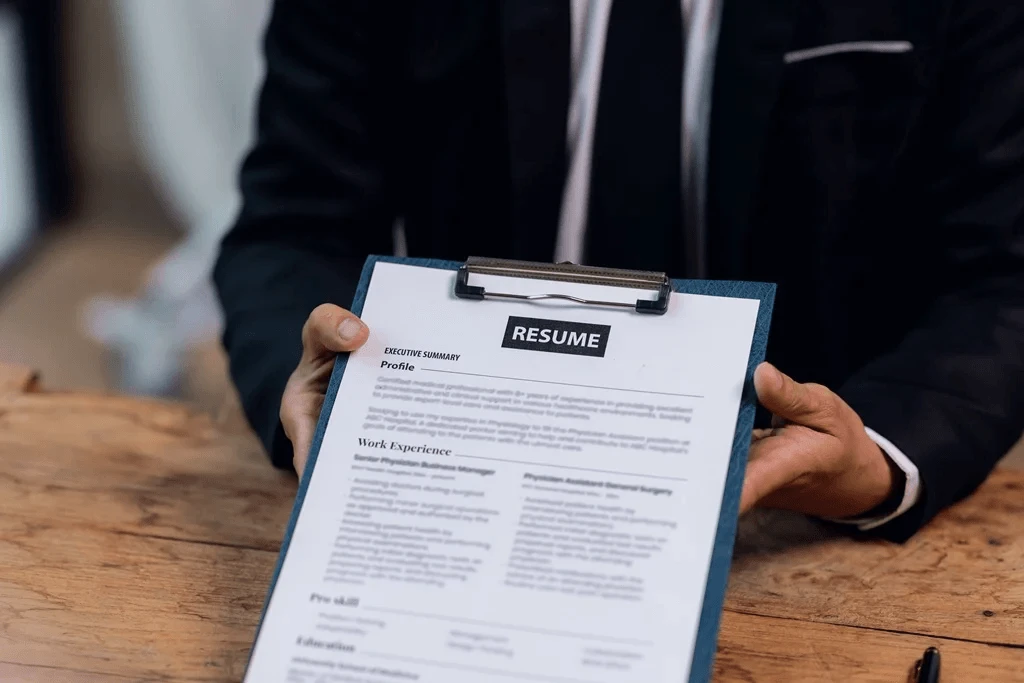Your resume is your first opportunity to make an impression, and the format you choose determines how effectively your skills and experiences are presented. The reverse chronological resume is the go-to choice for job seekers looking to showcase their career growth and recent accomplishments. Its clean and familiar structure not only highlights your professional experience but also appeals to hiring managers seeking clarity and relevance.
In this blog, we’ll dive into the essentials of the reverse chronological resume, its advantages, when to use it, and how to structure it. Plus, we’ll share expert tips to help you craft a resume that stands out from the crowd.
What Exactly is a Reverse Chronological Resume?
A reverse chronological resume is the most widely used resume format, recognized for its clear and logical structure. It begins with your most recent professional experience and works backward through your employment history, providing hiring managers with a straightforward overview of your career trajectory. This format is particularly effective for job seekers with a consistent work history, as it emphasizes career growth and progression.
What sets the reverse chronological resume apart is its ability to highlight relevant job titles and accomplishments in an easily digestible format. Each role includes essential details such as company name, employment dates, and job descriptions, making it simple for employers to evaluate your qualifications. It is especially beneficial for emphasizing job promotions, increased responsibilities, and long-term contributions to previous organizations

Top Advantages of Using a Reverse Chronological Resume
The reverse chronological resume offers multiple advantages that make it a top choice among job seekers and hiring managers alike. It’s clear structure and emphasis on recent accomplishments make it an effective way to showcase qualifications.
Below are six key benefits of using this widely recognized resume format:
1. Emphasizes Recent Achievements
This format places your most recent accomplishments at the forefront, allowing employers to focus on your latest and most relevant skills and experiences. It ensures your professional history aligns directly with the current demands of the job market.
2. Clear and Logical Layout
The structured order makes it easy for hiring managers to navigate through your employment history. This clarity helps employers quickly identify your qualifications and suitability for the role.
3. ATS-Friendly
Most applicant tracking systems (ATS) are designed to scan chronological resumes efficiently. This increases your chances of passing initial screenings and getting your application in front of a hiring manager.
4. Showcases Career Growth
The format highlights your progression through your increasing responsibilities, promotions, and long-term contributions to past employers. It underscores your reliability and career stability.
5. Ideal for Most Industries
Whether you’re in healthcare, IT, finance, or education, this resume format works well in industries that value consistent employment history and clear career paths. It’s a versatile option for a wide range of job seekers.
6. Easy to Customize
Using a chronological resume template allows you to tailor your resume for different job applications. This adaptability ensures that you can highlight specific skills and experiences that align with each role’s requirements.
Related Article:
When to Use a Reverse Chronological Resume
The reverse chronological resume works best for job seekers with a consistent and progressive work history. If your career shows clear advancements, such as promotions or increasing responsibilities, this effectively highlights your professional growth and stability. Employers prefer this structure because it clearly demonstrates how your skills and experience have evolved over time.
It’s especially suited for those applying to roles that prioritize professional experience, such as managerial or specialized positions. These roles often require a proven track record, and the reverse chronological format makes it easy for hiring managers to see your relevant achievements.
However, if you have considerable employment gaps, are a recent graduate, or are transitioning to a new career, this format may highlight your weaknesses. In these cases, a combination or functional resume may be a better option, as it focuses more on skills and accomplishments rather than job history.

How to Structure Your Reverse Chronological Resume
A reverse chronological resume follows a professional and organized format, ensuring it’s easy for hiring managers to navigate. Here’s a step-by-step guide to crafting one:
Contact Information
Start with your full name, phone number, email address, and LinkedIn profile or portfolio link. Make sure this section is easy to spot and all details are current to facilitate quick contact from hiring managers.
Resume Summary
Craft a resume summary that concisely presents your most important achievements, job titles, and career trajectory. This section should highlight your most relevant strengths while aligning with the specific role you’re targeting.
Professional Experience
Organize your professional experience in reverse chronological order, starting with your most recent position. For each role, list your job title, company, dates of employment, and bullet points that quantify your successes and key contributions.
Skills Section
Create a dedicated section listing both hard and soft skills pertinent to the job. Organize them in a bullet-point format, focusing on skills that align directly with the role to make them stand out to both hiring managers and the ATS.
Education Section
List your educational qualifications in reverse chronological order, including degrees, certifications, and any relevant coursework or honors. Be sure to include the institution name and graduation year, especially for recent graduates.
Additional Sections
Consider including additional sections like volunteer work, certifications, professional memberships, or awards to give your resume more depth. If you include these, keep them concise, and ensure they are relevant to the position you’re applying for.
Expert Tips for Crafting a Powerful Reverse Chronological Resume
Creating a reverse chronological resume is not just about listing jobs—it’s about strategically presenting your professional experience to make a lasting impression. Follow these expert tips to make your resume stand out:
1. Tailor Your Resume for Each Job
Adjust your resume summary, skills section, and professional experience to reflect the keywords and job description of the position you’re applying for. Customization increases relevance.
2. Start with Strong Action Verbs
Use powerful action verbs like “achieved,” “led,” or “streamlined” to begin bullet points in your employment history. This adds impact to your achievements.
3. Quantify Your Accomplishments
Include measurable results wherever possible, such as “increased sales by 25% in one year.” Numbers make your achievements tangible and impressive.
4. Focus on Recent Roles
For experienced professionals, emphasize your last 5-10 years of employment history. This ensures hiring managers focus on your most relevant and recent professional experience.
5. Keep Formatting Clean
Use a professional layout with consistent fonts, clear headings, and ample white space. A chronological resume template will simplify this process.
6. Proofread for Perfection
Eliminate typos and errors to present a polished resume. Even minor mistakes can leave a negative impression on hiring managers.

Take the Next Step in Your Career with a Winning Resume
The reverse chronological resume is a tried-and-true format that helps job seekers effectively showcase their career growth and achievements. By following the guidelines and expert tips in this blog, you can craft a compelling resume in reverse chronological order that captures the attention of hiring managers.
For those seeking professional assistance, Resume Professional Writers is here to help. Our expert team creates customized, ATS-optimized resumes tailored to your unique skills and career goals. Whether you’re looking to refresh your current resume or need a brand-new one, we’ll ensure it highlights your strengths and positions you for success. Take the first step toward landing your dream job—get started with us today!








